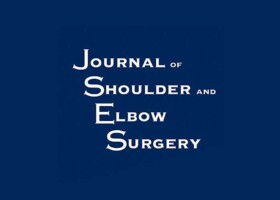
Authors:
Jilden TR, Abbas MJ, Evans H, Abbas L, Washington KJ, Millett PJ, Okoroha
Abstract:
Background
Despite the ubiquity of health information on YouTube, the quality of the information as it pertains to total shoulder arthroplasty (TSA) rehabilitation is unknown. The purpose of this study is to investigate the quality of information available on YouTube as it pertains to rehabilitation following TSA, including anatomic and reverse TSA.
Methods
Utilizing predefined search terms, 480 videos regarding rehabilitation following TSA were screened for study inclusion. A total of 143 videos were included in the final analysis. Of these, 99 (69.2%) videos were on rehabilitation of anatomical TSA and 44 (30.8%) videos reported on rehabilitation after reverse TSA. Each video was reviewed using 3 scoring systems: (1) Journal of the American Medical Association (JAMA) benchmark criteria, (2) Global Quality Score (GQS), and (3) DISCERN instrument.
Results
YouTube videos regarding TSA are of suboptimal educational quality with a mean JAMA score of 2.5 ± 0.7, mean GQS of 2.7 ± 0.9, and mean DISCERN score of 33.2 ± 5.5 overall. Upon evaluation of video metrics based on classification it was found that educational nonphysician videos had significantly more likes than all other categories (P = .01). Educational physician videos were found to be significantly longer than all other categories (educational physician: 10.0 ± 14.8 minutes, educational nonphysician: 6.2 ± 3.2 minutes, personal testimony: 3.5 ± 2.6 minutes, commercial: 5.8 ± 5.4 minutes; P < .01) and had significantly higher JAMA (P < .01), GQS (P < .01), and DISCERN (P < .01).
Conclusion
YouTube videos are a poor source of educational information for patients regarding TSA rehabilitation. Educational videos prepared by nonphysicians accrued more likes than other video categories. Although educational videos by physicians provided statistically higher quality educational content as noted by JAMA, GQS, and DISCREN scores, the average scores across all author categories were classified as low (JAMA), moderate to poor (GQS), or poor (DISCERN) quality educational content. Additionally, our findings suggest that physician educational videos that are shorter in duration are more likely to be well received and watched to completion by viewers compared to longer videos. Patients should be provided trusted resources to learn more about TSAs.
For the complete study: You Tube is a poor-quality source for patient information on the rehabilitation following total shoulder arthroplasty
